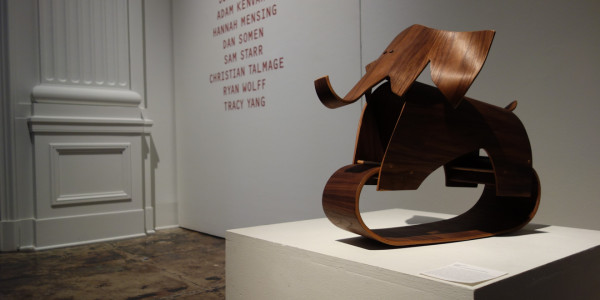
Social media platforms such as deviantART, Etsy and Instagram provide an alternative to the traditional gallery space as an arbiter of culture. This new, more accessible mode of art-sharing allows hobbyists and underground artists to gain exposure for their work. However, there are polarizing opinions about this new venue. The physicality of the gallery space is key to experiencing visual art and to differentiating the amateur artist from the professional. Ultimately, what separates amateur and professional art is not so much an issue of content as it is an issue of context and public acceptance, which the gallery provides.
Although the two platforms — social media and the gallery — perform a similar role, these are fundamentally at odds with each other. Social media sites are a product of their respective communities: Everyone can share and interact with uploaded content. Exhibition curators regulate the work displayed in galleries. The former is based on the concept of widespread access, while the latter values control of public taste.
Increased accessibility to visual art through social media mitigates the esteem of high art. By constraining itself to an elite, niche community, high art distances itself from popular art and elevates the status of those who are accepted in said community. A gallery presence is thereby crucial to building an artist’s persona, serving as an artist’s ethos, in a sense. Additionally, the physicality and impermanence of the gallery space are elements that documentation via social media cannot replicate.
Conversely, the social network encourages artists to depart from the established mainstream culture of fine art, fostering the rise of an underground community. Hobbyist sites like deviantART and Etsy actually possess a greater web presence than cultural institutions such as the Museum of Modern Art, the Metropolitan Museum of Art and the Louvre.
There are clear advantages to having social media as a means of art-sharing. Works-in-progress posted by artists, on Instagram and YouTube, showcase and provide insight into the creative process, heightening our appreciation for the artists’ imagination and technical ability. Russian grunge artist Lora Zombie, for example, runs a blog on which she posts sketches and short clips detailing how she creates her graphic watercolor-based compositions.
Galleries must integrate online tools into the viewing and buying experience of art in order to stay relevant. Social media is not a substitute for the gallery per se, but instead a means of extending the outreach of the institution beyond a community that is oftentimes condemned for its rigidity and elitist attitudes. Recently, social media has been used to personalize the gallery experience by placing users in curatorial roles and enabling them to participate in virtual galleries.
The stigma against social media art arises from the fact that it is not curated by someone whose job it is to distinguish between amateur and professional artists. But does a piece of art become any less legitimate if it is not displayed in a traditional exhibition setting? Why is it important that the arts maintain an air of exclusivity and privilege?
As galleries optimize the viewing experience for a wider, more active audience, and as artists integrate social media into their work, the gray area between the amateur and the professional blurs. Randy Crisologo, better known by his screen name “itsbirdy,” is an Alberta-based illustrator who rose to prominence through Instagram by sharing his adaptations of Japanese anime culture. Brazilian artist Rafael Mantesso, with an Instagram follower base of over 200,000, often posts small illustrations alongside photographs of his bull terrier, Jimmy Choo. This is a positive development for non-professional artists, who have begun to receive more respect and exposure for their work. But for professional artists, their institution is being fundamentally shaken — hence the backlash from the latter.
The prejudice against the underground, or amateur, art community stunts its growth and marginalizes the work it produces. The implications that the rise of social media has on the future of the art world are numerous. These include a more globalized arts scene, as well as more artists occupying the gray area between the amateur and the professional. The art gallery, undergoing a transformation from a simple art-sharing platform to an interactive space, must accept online tools into its repertoire in order to stay afloat in a social-media driven society.
Contact Eric Huang at eyhuang ‘at’ stanford.edu.
